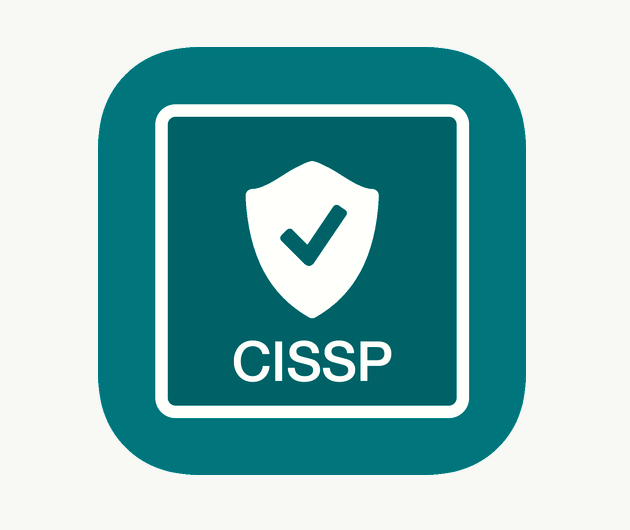CISSP - Question Bank 09
Test your knowledge of CISSP with these multiple choice questions. Each Question Bank includes 20 practice questions that have been designed to measure your knowledge of key ideas.
A key factor to keep in mind is that guessing is better than not answering a question.
Every single question on the CISSP exam is a four-option multiple choice question with a single correct answer. Some are straightforward, such as asking you to select a definition. Some are a bit more involved, such as asking you to select the appropriate concept or best practice. And some questions present you with a scenario or situation and ask you to select the best response.
StartQ1. Which one of the following is not a goal of cryptographic systems?
A. Nonrepudiation
B. Confidentiality
C. Availability
D. Integrity
Q2. John recently received an electronic mail message from Bill. What cryptographic goal would need to be met to convince John that Bill was actually the sender of the message?
A. Nonrepudiation
B. Confidentiality
C. Availability
D. Integrity
Q3. What is the length of the cryptographic key used in the Data Encryption Standard (DES) cryptosystem?
A. 56 bits
B. 128 bits
C. 192 bits
D. 256 bits
Q4. What type of cipher relies upon changing the location of characters within a message to achieve confidentiality?
A. Stream cipher
B. Transposition cipher
C. Block cipher
D. Substitution cipher
Q5. Which one of the following is not a possible key length for the Advanced Encryption Standard Rijndael cipher?
A. 56 bits
B. 128 bits
C. 192 bits
D. 256 bits
Q6. Which one of the following is a cryptographic goal that cannot be achieved by a secret key cryptosystem?
A. Nonrepudiation
B. Confidentiality
C. Availability
D. Integrity
Q7. When correctly implemented, what is the only cryptosystem known to be unbreakable?
A. Transposition cipher
B. Substitution cipher
C. Advanced Encryption Standard
D. One-time pad
Q8. What is the output value of the mathematical function 16 mod 3?
A. 0
B. 1
C. 3
D. 5
Q9. In the 1940s, a team of cryptanalysts from the United States successfully broke a Soviet code based upon a one-time pad in a project known as VENONA. What rule did the Soviets break that caused this failure?
A. Key values must be random.
B. Key values must be the same length as the message.
C. Key values must be used only once.
D. Key values must be protected from physical disclosure.
Q10. Which one of the following cipher types operates on large pieces of a message rather than individual characters or bits of a message?
A. Stream cipher
B. Caesar cipher
C. Block cipher
D. ROT3 cipher
Q11. What is the minimum number of cryptographic keys required for secure two-way communications in symmetric key cryptography?
A. One
B. Two
C. Three
D. Four
Q12. What is the minimum number of cryptographic keys required for secure two-way communications in asymmetric key cryptography?
A. One
B. Two
C. Three
D. Four
Q13. Which one of the following Data Encryption Standard (DES) operating modes can be used for large messages with the assurance that an error early in the encryption/decryption process won't spoil results throughout the communication?
A. Cipher Block Chaining (CBC)
B. Electronic Codebook (ECB)
C. Cipher Feedback (CFB)
D. Output Feedback (OFB)
Q14. What encryption algorithm is used by the Clipper chip, which supports the Escrowed Encryption Standard sponsored by the U.S. government?
A. Data Encryption Standard (DES)
B. Advanced Encryption Standard (AES)
C. Skipjack
D. IDEA
Q15. What is the minimum number of cryptographic keys required to achieve a higher level of security than DES with the Triple DES algorithm?
A. 1
B. 2
C. 3
D. 4
Q16. What approach to key escrow divides the secret key into several pieces that are distributed to independent third parties?
A. Fair Cryptosystems
B. Key Escrow Standard
C. Escrowed Encryption Standard
D. Fair Escrow
Q17. What kind of attack makes the Caesar cipher virtually unusable?
A. Meet-in-the-middle attack
B. Escrow attack
C. Frequency attack
D. Transposition attack
Q18. What type of cryptosystem commonly makes use of a passage from a well-known book for the encryption key?
A. Vernam cipher
B. Running key cipher
C. Skipjack cipher
D. Twofish cipher
Q19. Which AES finalist makes use of prewhitening and postwhitening techniques?
A. Rijndael
B. Twofish
C. Blowfish
D. Skipjack
Q20. Matthew and Richard wish to communicate using symmetric cryptography but do not have a prearranged secret key. What algorithm might they use to resolve this situation?
A. DES
B. AES
C. Diffie-Hellman
D. Skipjack
- Question Bank 00
- Question Bank 01
- Question Bank 02
- Question Bank 03
- Question Bank 04
- Question Bank 05
- Question Bank 06
- Question Bank 07
- Question Bank 08
- Question Bank 09
- Question Bank 10
- Question Bank 11
- Question Bank 12
- Question Bank 13
- Question Bank 14
- Question Bank 15
- Question Bank 16
- Question Bank 17
- Question Bank 18
- Question Bank 19


